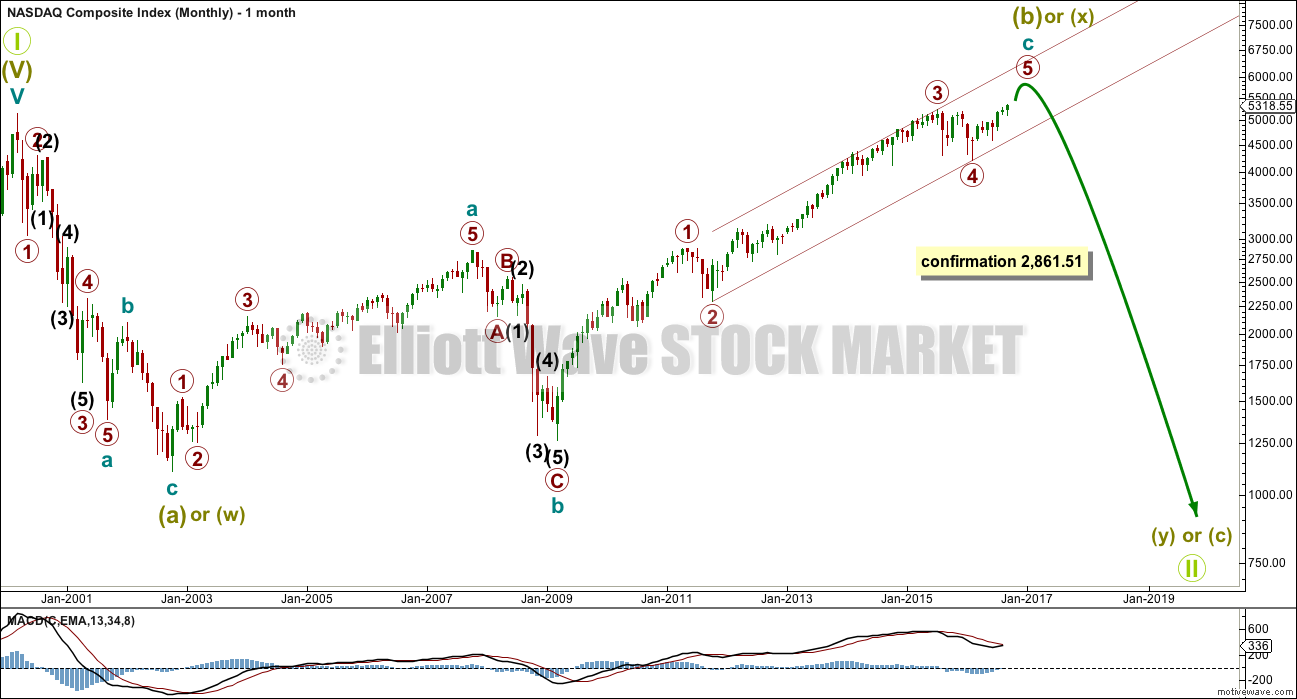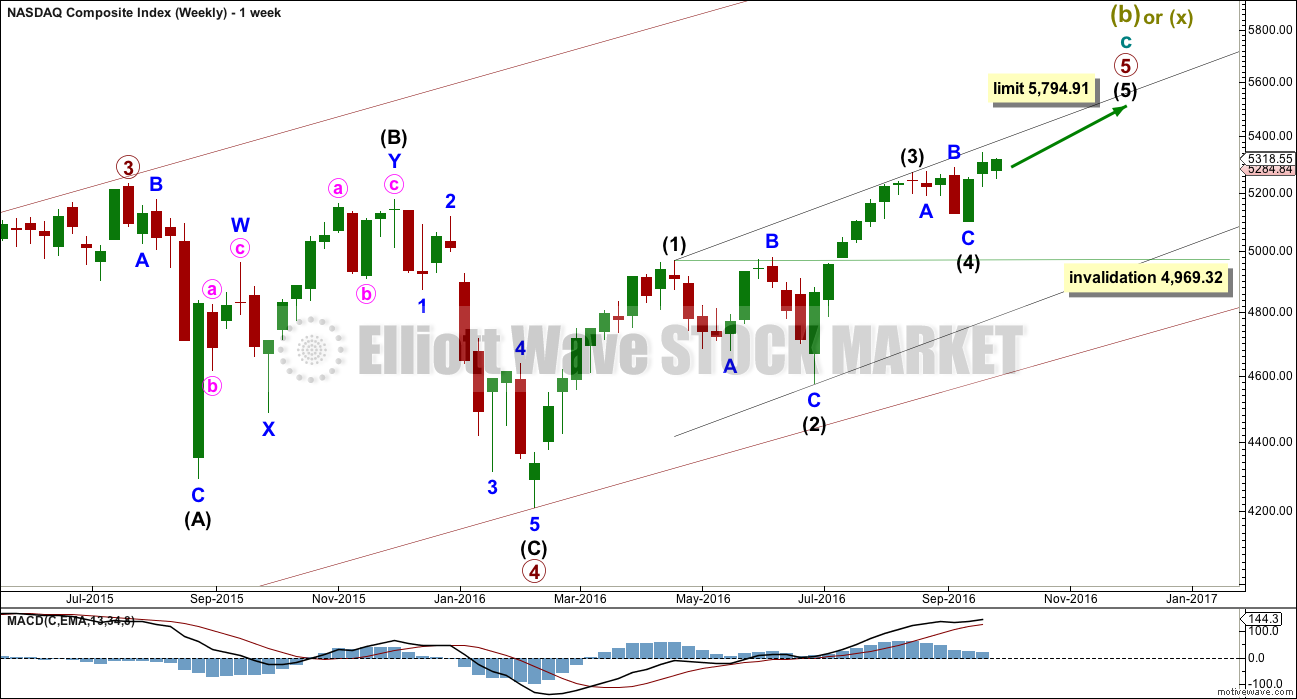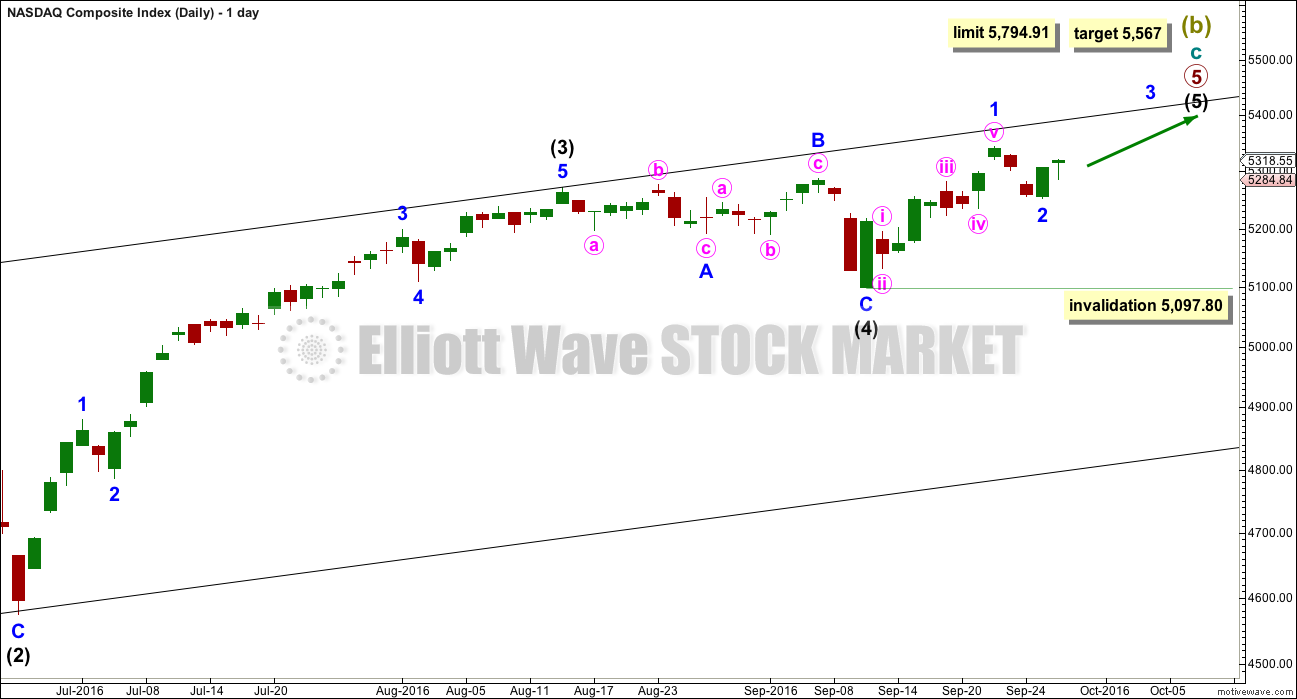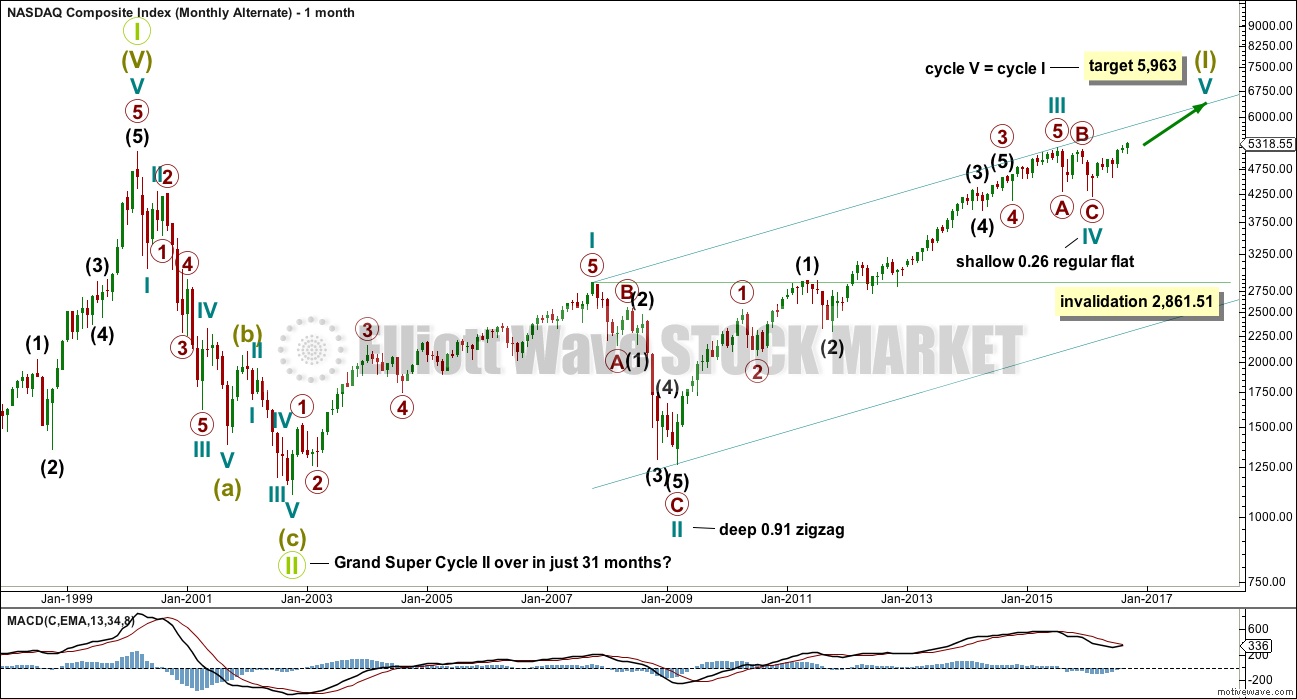Updated Elliott wave and Technical analysis of Nasdaq.
Summary: Both Elliott wave counts require more upwards movement. In the short term, volume supports this. There is some weakness to upwards movement and it may be limited to no longer than 5,794.91.
New updates to this analysis are in bold.
MAIN WAVE COUNT
MONTHLY CHART
Grand Super Cycle I is assumed to have ended in March, 2000. Thereafter, Grand Super Cycle II begins.
The first wave down within Grand Super Cycle II is a three, so Grand Super Cycle II may be either a flat correction or a combination.
Within a flat correction, the maximum conventional length for super cycle wave (b) would be twice the length of super cycle wave (a) at 9,156.49. The normal range for super cycle wave (b) would be from 1 to 1.38 the length of super cycle wave (a) at 5,132.52 to 6,661.65. So far it is still within normal range.
Super cycle wave (b) is subdividing as a zigzag. Within the zigzag, cycle wave c is an impulse and close to completion. Within cycle wave c, there is alternation between the zigzag of primary wave 2 and the flat correction of primary wave 4.
The channel about cycle wave c is drawn using Elliott’s second technique.
WEEKLY CHART
Primary wave 4 fits as a regular flat correction. Intermediate wave (B) within it fits as a double zigzag and is a 0.94 length of intermediate wave (A).
Within primary wave 5, so far intermediate wave (3) is shorter than intermediate wave (1). This limits the length of intermediate wave (5) to no longer than equality in length with intermediate wave (3), so that the core Elliott wave rule stating a third wave may not be the shortest is met. This limit is at 5,794.91.
Draw a smaller channel about primary wave 5 as shown.
If intermediate wave (4) continues further, it may not move into intermediate wave (1) price territory below 4,969.32.
When the five wave impulse upwards labelled intermediate wave (5) is complete, then an alternate would be required for this wave count which moves the degree of labelling within primary wave 5 all down one degree. It is equally as likely that only intermediate wave (1) is coming to an end. This idea would not have a limit of 5,794.91.
DAILY CHART
Within intermediate wave (5), minor wave 1 looks complete. Minor wave 2 may or may not be complete. If minor wave 2 moves lower, it may not move beyond the start of minor wave 1 below 5,097.80.
At 5,567 intermediate wave (5) would reach 0.618 the length of intermediate wave (1).
ALTERNATE WAVE COUNT
MONTHLY CHART
It is possible that Grand Super Cycle wave II was a relatively brief zigzag over in just 31 months. Possible, but highly unlikely. All possibilities should be considered.
Upwards movement from the end of Grand Super Cycle wave II subdivides so far as an almost complete 5-3-5. This may be cycle waves I-II-III. The subdivisions are exactly the same as a zigzag for the main wave count. Weekly and daily charts would be the same with the exception of the degree of labelling.
Cycle wave IV may not move into cycle wave I price territory below 2,861.51. If this alternate is invalidated, then downwards movement could not be a fourth wave correction within a continuing bull market, so at that stage the bull market would be confirmed as over and a larger bear market would be expected to be underway.
TECHNICAL ANALYSIS
DAILY CHART
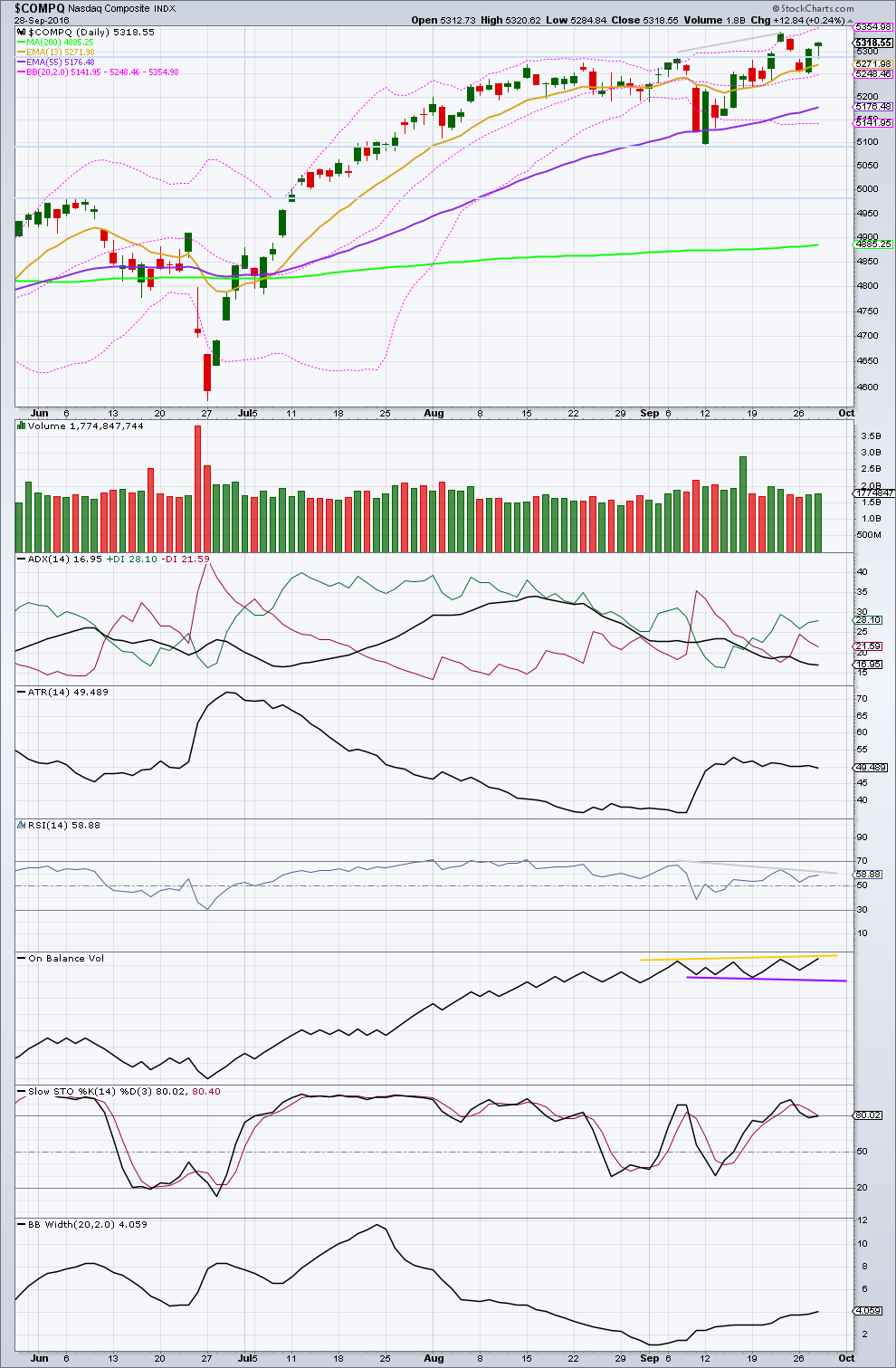
Click chart to enlarge. Chart courtesy of StockCharts.com.
The longer term trend is up. The 200 day moving average (lime) is pointing upwards. The mid term Fibonacci 55 day moving average (purple) is pointing upwards and is above the long term average. The short term Fibonacci 13 day moving average is also pointing up and is above the mid term average.
The last two days of upwards movement have support from volume, which is stronger than the prior two downwards days. In the short term, more upwards movement would be a reasonable expectation here.
On Balance Volume may find resistance at the yellow line, which may halt the rise in price least temporarily here.
ADX is declining, indicating the market is not trending. ATR is flat to declining. Bollinger Bands are expanding. If this market is trending, it may be in the very early stages, but ADX needs to turn up to confirm that.
There is bearish divergence between price and RSI at the last two swing highs (light grey lines). This indicates weakness in price.
This analysis published @ 03:07 p.m. EST.

